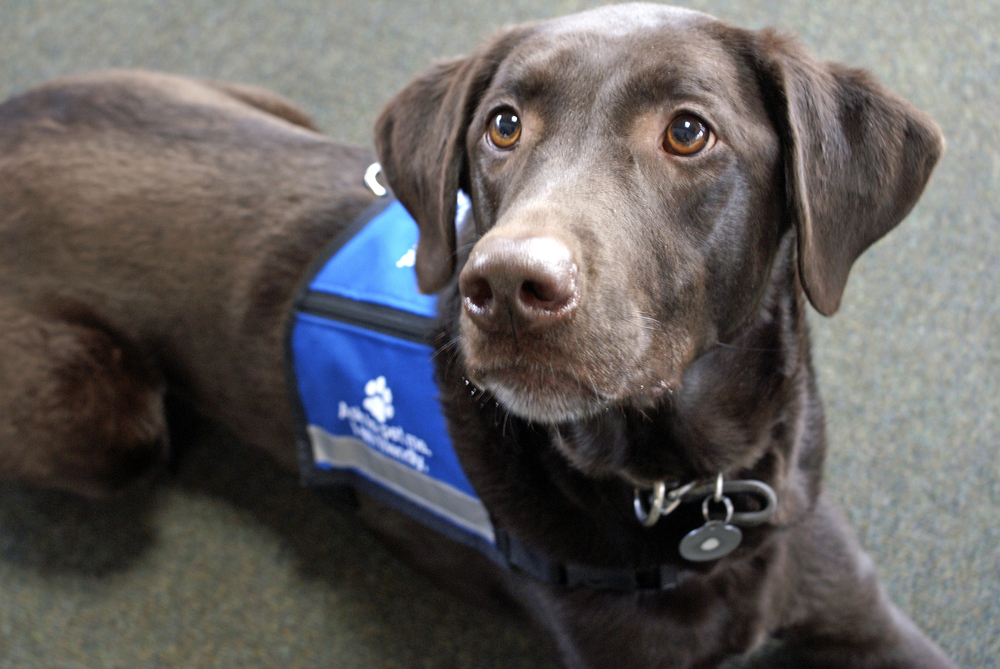During the COVID-19 pandemic, many remote employees have no doubt strengthened their bonds with and emotional dependency on their pets and, in some cases, service animals. As a result, you should expect to see a surge in animal-related accommodation requests as workers return to their physical workplaces. Here are some ideas to help you properly prepare for the requests and mitigate the risks of an onset of disability discrimination claims.
Under Title I of the Americans with Disabilities Act (ADA), employers may not discriminate against a qualified individual because of a disability and must provide a reasonable accommodation if necessary for the person to perform the essential job functions. You aren’t required, however, to provide accommodations that present an undue hardship.
In evaluating requests for an animal to accompany an employee with a disability into the workplace, you don’t have to consider an accommodation allowing for all types of creatures. Instead, you need only consider requests to bring a service animal or emotional support or therapy animal that enables the person to perform the essential functions of their job.
Absent a companywide policy to the contrary, you aren’t required to consider requests to bring animals to work that serve solely as pets. The tricky part in drawing the distinction, however, is that Title I, which governs employment, contains no set definition of what constitutes a “service animal” or an “emotional support or therapy animal.”
Under the ADA’s Title II and III regulations (for public accommodations), service animals are defined as “any dog that is individually trained to do work or perform tasks for the benefit of an individual with a disability, including physical, sensory, psychiatric, intellectual or other mental disability.” In addition to dogs, miniature horses meeting certain criteria, including size and weight limitations, have been determined to be service animals.
Borrowing from those interpretations, to differentiate between a pet and a service animal, you should consider what specific work or functions the animal would perform related to the requesting employee’s disability:
- A dog providing service to a diabetic employee may be trained to respond to signs that its owner is experiencing low blood sugar levels and seek swift help.
- Comfort or therapy animals may differ from service animals if they mainly provide comfort and companionship. In certain instances, however, they also may perform work functions more akin to a service animal (even if the employee describes it as a comfort or therapy animal).
- Pets, on the other hand, are domestic or tamed animals kept purely for companionship.
Tips For Engaging in Interactive Process
Although the types of animals can be distinguished, keep in mind that in the context of providing a workplace accommodation, the line of distinction for when an animal should be treated as a service animal may not be easily identifiable. For instance, an employee suffering trauma that triggers post-traumatic stress disorder may request an accommodation to bring an emotional support animal into the workplace. In that instance, you would need to engage in the interactive process with the employee.
First, would the arrangement present an undue hardship to your company? And, second, can the employee show how the animal would help them to perform the essential job functions? You also may consider alternative accommodations, such as continued remote work (so the employee can be with the animal) or an alternate schedule, as appropriate.
You aren’t required to consider an accommodation request if (1) it’s unlikely to enable an employee to perform the essential functions, or (2) the individual doesn’t have the background to meet the skills, experience, education, and other job-related qualifications necessary for the position.
Where Employers Should Go From Here
To prepare for returning to workplaces at the end of the COVID-19 pandemic, you should take steps now to ensure your policies and procedures will support the efficient and proper review of service animal-related disability accommodation requests:
- Consider providing refresher training to your HR team members and others who review accommodation requests for your business.
- Ensure only job-related medical information is solicited for reviewing the requests, and keep it confidential in the employee’s medical file.
- Take inventory of your job descriptions to ensure they’re updated to reflect the current requirements, including essential duties that mandate on-site work.
The more you can do now to prepare for the return to the worksite, the better positioned you’ll be to avoid an influx of animal-related disability discrimination claims.
Ramona Palmer-Eason is an attorney with Armstrong Teasdale LLP in Kansas City. She can be reached at rpalmereason@atllp.com.
The post Handling ADA Requests for Service Animals at Work appeared first on HR Daily Advisor.
